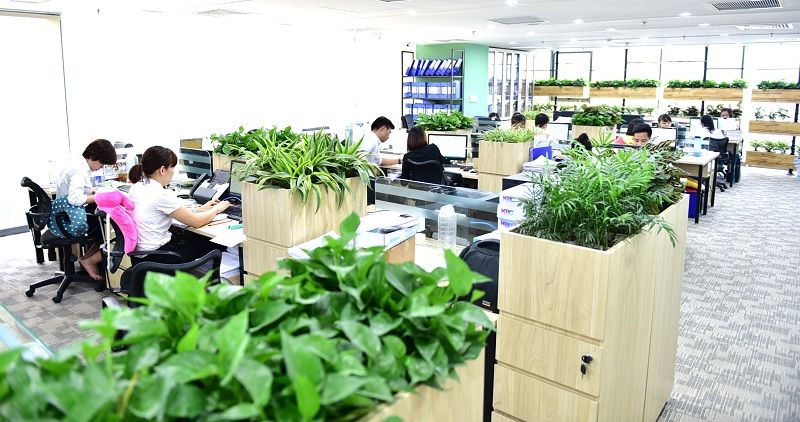Green office is an initiative to help businesses and organizations improve the way of operating and managing offices, to reduce negative impacts on the environment and cut costs, waste.
These changes can be taken place in all aspects of office operations: from reducing energy consumption (electricity) and resources (water, paper) to redesigning office interiors to maximize natural light and air circulation; from the means that employees choose to go to work and perform daily tasks to the ways that employers organize company conferences and vacations; from selecting environmentally friendly foods and products to creating systems of recycling and reuse; from using renewable energy sources to raising green awareness to all workers.
No general green recipe can be applied to all offices but depending on the size and conditions of the organization to create appropriate green workplace strategies.
According to the calculations of the Australian Green Office program, a USD$4,000 photocopy machine that lasts 7 years will consume up to $1,500 in electricity, $24,000 in paper expense, and $15,000 in ink.
At the same time, a power-saving photocopier with refillable cartridges and a power-saving mode that can process recycled papers will reduce energy consumption and electricity bills by up to 80%, paper and ink expenses by up to 50%, greenhouse gas emissions from producing office supplies by up to 75%, and the number of trees being cut off by 50.

The green factor makes a big difference for office buildings.
Biophilic design can be understood as the integration of nature and natural elements into the built environment. This is considered a guideline in creating an effective work environment and experts in this field have recorded an increase in productivity and employee satisfaction in greener-designed workplaces by 8% and 13%, respectively.
Clients are willing to pay a 23% extra for hotels with green elements; shoppers buy 8-12% more in greener retail environments; call staffs increase their efficiency by 6% when looking at trees or green spaces; these are some examples depicting the benefits of biophilic design.
Pasona Group Japan has taken the next step and integrated the “vertical farm” model into the working environment with tomato pots installed in the meeting hall lobby, passion fruit trees used for decorative walls, and salad vegetables placed in group discussion rooms. With this combination, the multi-functional space in the office has been given a new definition and people’s interactions are better facilitated.
In Ho Chi Minh city, a Grade-A office building also applied this concept with a Zen garden for employees working in the building to enjoy fresh air while looking at the whole city. These community spaces are seen to be a ‘golden key’, creating unique features for high-rise buildings, which are perceived to be solid ‘concrete boxes’ of the city.
The benefits are undeniable but plants are living organisms that needed to be carefully looked after, otherwise the advantages of using bonsai in the workplace can be reversed. Thus, care teams and experts are encouraged to ensure the optimal development of the green systems.

















